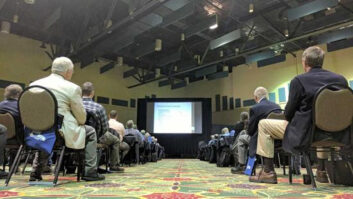by Leslie Stimson

I wrote last fall that digital radio in Canada had stalled; now it seems the DAB portion of that country’s digital radio technologies is spiraling down.
The Canadian Broadcasting Corp. told its regulator, the Canadian Radio-television Telecommunications Commission, it was shutting down four digital transmitters in Montreal that had been broadcasting the Eureka-147 DAB signal since 1998.
The signals are CBME-DR-1, CBM-DR-1, CBF-DR-1 and CBFX-DR-1 Montréal, Quebec. The CRTC last week revoked the licenses at CBC’s request.
According to the World DAB Forum, proponents of the DAB technology, the Eureka-147 technology launched in Canada in late 1999. Stations in Toronto, Montreal and Vancouver started broadcasting that year, with others added in Ontario in 2000 and Ottawa in 2003.
There were 73 licensed DAB stations in Canada as of March, according to the DAB website.
The CRTC itself recognized that the Canadian DAB rollout had stalled by 2006 for several reasons, including what it said was a lack of affordable receivers, and that the buildout had only been in large markets.
Contributing to the receiver issue is that most of the countries using DAB are broadcasting on Band III (174–230 MHz), a VHF band, while Canada is using L-band, which in that country extends from 1452 to 1492 MHz. Both English and French must be accommodated in DAB receivers; the U.S. decision to go with a different digital radio technology meant that receiver makers needed to manufacture or adapt units solely for the Canadian market, an expensive proposition.
The large-market-only rollout complicated life for the auto industry, which hoped that more stations between the metros would transmit digital signals; when that didn’t happen, automakers in Canada switched their support to digital satellite radio, the CRTC said.
Noting the stalled DAB rollout, in 2006 the CRTC made a number of changes to spur the DAB effort, like allowing stations to air programming that differed from analog on the digital channels. That’s also when it began allowing FM IBOC test transmissions on, ironically, the CBC in Toronto and Peterborough, Ontario and now allows stations to use FM IBOC on a voluntary basis.
Broadcasters beyond the large border markets have resisted installing the new equipment required to be part of a transmission “pod” in which five stations occupy no more than 20% of the bandwidth of one 1.5 MHz channel. Each station enjoys roughly the same coverage area and power level.
I’ve heard for a while that Canadian broadcasters were waiting to see what the U.S. was going to do with IBOC before officially committing to a digital technology other than DAB.
Two key differences between DAB and IBOC may help IBOC’s cause in Canada. The DAB technology is digital-only, using L-band, with no fallback to analog like the iBiquity system. Canadian broadcasters aired simulcasts of their analog programming on their digital channels, unlike HD Radio’s multicast channels. Still, the issues of needing to invest in new digital transmission equipment remain in an economy that’s still getting back on its feet.












